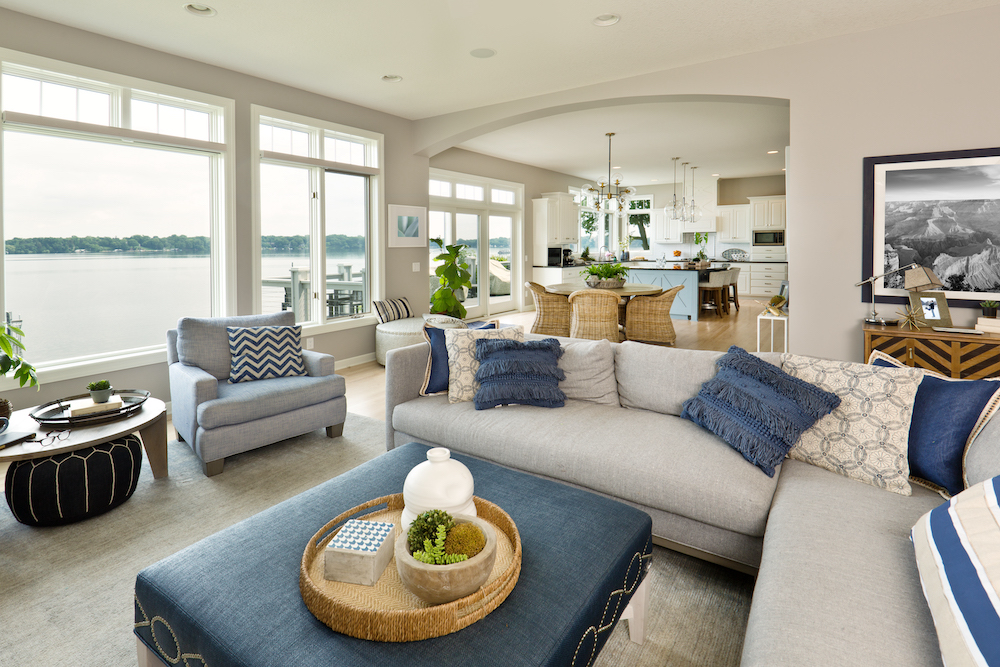Help the Environment and Reduce Energy Costs
Whether choosing a timeless, classic design or a more cutting-edge and trendy option, one constant remains in place in 2021: home renovation and design projects should be undertaken with sustainability in mind. In order to appeal to a more socially-conscious market, contemporary homes must include eco-friendly design ideas that protect the environment and reduce energy costs.
While there is no shortage of projects that could help a home be more eco-friendly, the following are some creative ways to improve the sustainability of a home without sacrificing any style.
Window Upgrades
One of the best ways to reduce energy consumption in a home is to let the sun do the majority of the work. While some homeowners have adopted solar panels as an active means of converting the sun’s energy into electricity, the sun can effectively be employed in more passive, conservative ways that do not detract from the home’s aesthetics.
One of the most fundamental of these methods is through the installation of upgraded windows. Traditional single-pane windows have long since been eschewed in the home in favor of multi-pane products that offer their own layer of insulation. The most innovative “smart” windows are actually designed with technology that traps heat and permits light flow during the summer while allowing both light and thermal transfer in the winter to allow the sun to heat the space.
At the very least, making an upgrade to larger windows is a strong idea, as the open and inviting look is popular in contemporary design. While the larger windows will reduce electricity costs by allowing more natural sunlight to illuminate the interior, it is important to take steps toward sealing windows for winter, as the larger surface area can allow for unwanted heat loss during the colder months if not properly sealed.
Bamboo Floors
Any hardwood floor, bamboo or otherwise, has the benefit of requiring very little electricity for cleaning, as most hard surfaces can be cleaned with mild soap and a wet mop. However, bamboo retains the appearance of many luxury hardwood products with the added benefit of being one of the most environmentally friendly flooring materials on the market. Bamboo is extremely easy to harvest and has one of the fastest-growing cycles of any commercial crop, allowing harvested bamboo to be replaced in a fraction of the time of timber-based products.
New Faucets and Showerheads
People use a fraction of the water they actually draw up for day-to-day activities such as cooking, cleaning, and getting a drink, with the unused portion going down the drain in the form of water waste. To help combat this problem, it is important that modern homes be equipped with innovative faucets and showerheads that restrict the flow of water. The best products on the market reduce water flow by up to 30% while using air pressure to replace the restricted water flow, keeping the performance of sinks and showers consistent while running water at a lower rate.
Door and Window Trim
Door and window trim can provide a decorative effect for a home’s interior, creating an element of contrast with the walls that make for a visually appealing space. Furthermore, the best door and window casing ideas can also beef up the home’s insulation, covering any gaps that exist and preventing the transfer of air and moisture that can negatively impact the home’s interior climate.
Conclusion
No matter the look an interior design project aims to achieve, it should be accomplished while simultaneously improving energy efficiency. By considering the eco-friendly design ideas listed in this piece, homeowners can arrange their space in a manner that helps the environment and reduces energy costs without sacrificing any aesthetic improvements.
Matt Lee is the owner of the Innovative Building Materials blog and a content writer for the building materials industry. He is focused on helping fellow homeowners, contractors, and architects discover materials and methods of construction that save money, improve energy efficiency, and increase property value.


